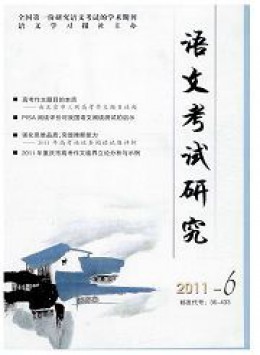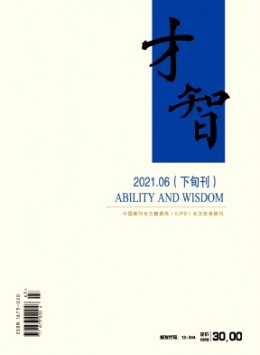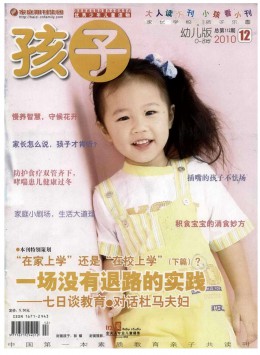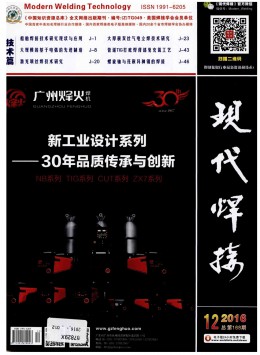我的同學我的班精選(九篇)
前言:一篇好文章的誕生,需要你不斷地搜集資料、整理思路,本站小編為你收集了豐富的我的同學我的班主題范文,僅供參考,歡迎閱讀并收藏。

第1篇:我的同學我的班范文
我的學校,說它差它其實也不差,畢竟它也是我們區的重點中學,與其它中學一樣,我的學校總喜歡在宣傳欄中吹噓自己那些有點虛偽的功名。這是一所地段中學,這也是我進這所學校之前所最擔心的一點,因為有許多不好的地段生,所以我很擔心自己會學壞,一開始我還去報考了許多學校,不過最后還是回這所學校讀了,畢竟它還有一個優點。這個優點也稱不上是地廣人稀,不過這所學校確實很大,多了許多活動場所,因此我還是選擇了這所學校。也許這個理由優點牽強,不過畢竟那些地段生多的問題是可以彌補的。
我的班級,說它差它確實是很差,無論是成績還是體育方面都是全級倒數的,因此原本開學高興的心情,這股火焰馬上就被這盆冷水給澆滅了,雖然是全班第一我卻怎么也高興不起來,相信這種第一名也沒有人想拿,畢竟在我們班的第一名,在那些好的班級只是第五或者第六名,雖然如此,我在這個班還算是混的下去,畢竟這個班還有一個我喜歡的地方,那就是語文和數學的老師很讓我滿意,當然英語和政治的老師也不差,這是給我的感覺沒有那兩科的好罷了,畢竟語文和數學都是我喜歡的學科。雖然在這個班會遇到不少的麻煩,但總有這么好的老師在我的身邊,這些不愉快都被化解了。
我的同學,不怎么特別,一樣是有好有壞,但這種只不過是所謂的同學罷了,并不是朋友,我所想說的是那些對我有利的好同學。也許友誼也是需要培養的,經過半年的相處,我在新的班級上也培養了不少的友誼。這些同學吧!有時幫我有時損我,有時因為開玩笑過火而惹我生氣,有時算是打發時間的運動與我追追打打,不過我想這種曲折的校園生活是必要的。這些同學大部分都是我傾訴和交流的對象,如此一來,讓我忘掉了許多憂愁,得到了許多快樂。現在似乎又多了一種說法,那就是周圍有好同學的人既會開心也會生氣。
第2篇:我的同學我的班范文
在英語課上,我們有得一拼。每堂英語課,我和李昊宸都爭先恐后地發言,上課時是個“死對頭”。別看他長得胖,可他的英語成績比我好。尤其是背單詞更比我好。在數學和語文課上,我們也經常比誰考試成績好一些。不僅如此,我和李昊宸在所有的科目上都要“爭個高低”,從一年級一直到現在。
李昊宸不僅學習成績好,還是體委。在體育課上,他管得非常嚴。有一次,清脆而響亮的上課鈴聲打響了,我們興高采烈地出來上體育課。恰巧體委李昊宸頭疼下不來了。頓時操場上沸騰了,怎么會是這樣?站不像站都瘋了似的。原來體委李昊宸是這么的重要啊!
六年級上學期還有一件事,讓我記憶猶新。有一次,因為一支筆的雞毛蒜皮的小事,和另一個同學動起手來。李昊宸看到了馬上把我們分開,避免了一場更大的“惡戰”。事后,李昊宸對我說:“你們是同學嗎?如果是,就不應該打得兩敗俱傷。”聽后,我懊悔極了,就這么一支筆的事,真不應該動手。
第3篇:我的同學我的班范文
我愛我們的老師,我愛我們的同學,我也愛我們的校園。
我們班的同學很可愛。也很淘氣,學習也都不錯。我現在五年級了,在一班。我們班的岳洪杰是男生。他最淘氣。他很愛打仗。不過很可愛。我們班的毛新宇長的很帥,是個小帥哥。不過,他很調皮。我們班的王天寶也是很頑皮,但是他很聰明。我說的是我們班的淘氣三大王。下面我要說的是我們班的學習三大王。
王搖12歲,長的很高,和我差不多高,不過我11歲。她學習很好,很惹人喜歡。不過脾氣不好。同學們不小心碰了下她。她就也打那個同學,她的爸爸是音一小的老師。包薩如拉學習好,長的也好看。本質也好,不罵人。李國新學習也不錯,可是他有點會罵人。他的品質不好。
我們班的同學可愛嗎?
等待繼續
第4篇:我的同學我的班范文
大胃王
“三大金剛”之大胃王——祝頌南他長得肥胖無比,頭上的頭發亂七八糟的,小小的眼睛被肥肥肉壓成了一條縫,兩個臉頰就好似兩個成熟的大柿子!所有的衣服凡是穿在他身上,就好像他穿著一身緊身衣似的。跑起步來他總是全班最后!他那大大的,啤酒桶似的肚皮一搖一擺的,好像一塊豆腐,又好像裝滿了一肚子的水,我們給他取了個綽號,他的“”的暗號就叫作“南瓜豆腐”。
要吃午飯了,我們的肚子都快餓扁了。大胃王連叫道:“我要吃飯,我要吃飯!”就像一個三四歲的小孩兒!輪著他了,只見班長用飯勺把飯盛到他的碗里,一勺、兩勺,只看堆起了一座小山,他滿意地拍著肚皮,回到座位上敞開他的血盆大口,狼吞虎咽地吃了起來。沒等我們盛完,他的飯碗和湯盆空空如也!走出門外,他對盛飯的班長說:“班長麻煩你再來一碗!”我倒!
睡午覺了,一個神秘人把毛毯蓋在頭上,從抽屜里掏出私藏的零食“吧唧吧唧”地吃了起來,管午睡的我正在巡邏,于是我便朝這個聲音走去,最終我找到了這次“零食案”的罪魁禍首——大胃王!我將他記上了黑名單,并把這次嫌疑罪的兇手,告上了法庭,他還說冤枉!
漫畫王
三大金剛-----漫畫王。班里但有大胃王,還有一個漫畫迷,人稱“漫畫王!”
“漫畫王”個子矮矮的,通常愛穿一些印著動漫的衣服。他的漫畫書應有盡有,包羅萬象,《阿衰》,《豌豆》,《柯南》……簡直是樣樣俱全!
做完了作業,他掏出了《火星忍者》津津有味地看起來,連睡午覺也忘記了!平時他就喜歡說一些動漫名言比如說:“我一定會回來的,我是大頭仔!”等等。這個人叫郭亦甫,他可是我的好朋友,平時我們交流,也是用漫畫來交流的!
到他生日了,我被請到了他家去吃飯。走進他的房間,真是非一般的凌亂,漫畫書占了他的半個書桌和半張床,各種各樣的海報,給他省了很多的墻紙,漫畫王的爸爸自豪地說:“有其父必有其子啊!”
搞笑的人妖
泰國的人妖是獨一無二的,我們這里是看不到的,但在這次生日晚會中,有一個活靈活現的人妖,就是王恩鍇!他有著豬八戒般的大耳朵,小小的眼睛就像墻角里的小縫!
這位男同學真是陰盛陽衰,說話娘娘腔的,讓你以為是女孩!他那觀音菩薩般的手指,常常翹起秀氣的蘭花指,扭來扭去的!說話總是要往后面加一個妞字,這真是一個貨真價實的太監!
第5篇:我的同學我的班范文
桐鄉市 職業教育中心學校12毛衫班 吳盼盼
我生活在一座小城市,它沒有北京的聞名中外,沒有上海的熱鬧繁華,也沒有南京的歷史悠長,更沒有深圳的經濟繁榮。它只是一座小城市,可它卻像初生的嬰兒般正在茁壯成長。
我不是出生在這里,可它卻用它獨特的魅力讓我想永遠停留在這里。2004年我隨父母來到這里,一個陌生的城市。道路兩旁的梧桐樹是我對這個城市最初的印象,貫穿城市的河流與隨處可見的石橋又使它別有一番風味。在我的記憶中,它雖不豐富多彩,卻也寧靜祥和。春天家周圍的荒地上留下了我們放風箏的身影,夏天我們伴著知了的叫聲穿梭在大街小巷卻也樂此不疲,秋天我們踩在遍地的梧桐落葉上傾聽冬日將至的聲音,冬天盼望下一場大雪便是我們一年中最后的一個愿望。
它,不失江南小城的清新婉約,卻也在城市建設中堅強前進。我在這個城市中成長,而我也見證了它十年間的發展進步。它不再是人們眼中的小鄉鎮,在十年建設中已逐漸成為真正意義上的城市,不僅是它的經濟發展,更是從它的治安、綠化、人文中逐漸成長為現在的文明城市、平安城市。
第6篇:我的同學我的班范文
我班里的每一位同學都是有各自的本領,各自的才能的哦!哄人笑的,行為古怪的。成績優異的。跟人打架的,上課起哄,學習認真的無一沒有,但是我還是最喜歡我的同桌啦。
恩,我的同桌呢——1.50左右的身高,戴著一副粉紅色的眼鏡,長相平凡普通的她,是咱們班老師的小幫手,兼職組長、語文課代表哦,我最喜歡她認真工作的樣子了。她比我大三個月,總是對我擺出一副大姐大的模樣。我還知道她最喜歡看【爸爸去哪兒】和連續劇了,而且是超級喜歡呢!m每次我上課走神或是昏昏欲睡的時候,她總會提醒我要認真上課。我的同桌唱歌也很好聽,她說她最喜歡聽【揮著翅膀的女孩】和【因為愛情】,告訴哦!她每次唱歌的時候我都在很認真聽的。每次上課,看著她那專注的神情,我就下定決心,一定要想我的同桌學習。我們在一起每天都很快樂,有難同當,有福共享,互相幫助,共同進步!
有次,我因上課沒帶彩色筆,所以我著急的左瞧右瞧以尋求幫助,這讓語文老師以為我走神了,眼神狠歷的瞟向我。哎!正當我手足無措的時候,我的同桌她把自己的筆借給我。到現在,我一直都在用她的筆哦,弄得我怪不好意思的,嘿嘿!
每個人一生總會有那么幾個好同學,就是那種吵了架會和好,有困難時他會伸出援助之手,有快樂你們會一起分享,你挫敗時他會鼓勵你。就算那個人貧窮又怎樣,就算那個人長相不好智商也不高,而且性格古怪又怎樣?但這就是朋友,這就是同學,同學之間的友情是多少錢也買不來的,相信吧,同學之間的友情會使我們享受到更多的快樂!請珍惜友情!珍惜同學情誼!
初一:古依婷
第7篇:我的同學我的班范文
你們暑假過的好嗎?一轉眼,歡樂的時光結束了,迎接我們的是嶄新的挑戰。因此我們應該打起精神,以最飽滿的精神去挑戰我們將遇到的困難。迎接初三的風風雨雨,相信通過我們的努力,一定會迎來最美的彩虹!
所以,我認為:我們應該并肩作戰,一起加油,一起努力,一起開創我們美好的未來!
我希望:希望你們停止瘋狂吧!讓我們一起揮灑汗水,一起奮發圖強,也一起拼搏向上!當然了,我也希望你們拼盡全力,不輸給這個世界。好讓大家一起去創造奇跡!
不要對自己沒有信心,不要總膽膽怯怯,加油吧,我們都不比別人差!
正所謂“三分天注定,七分靠打拼,愛拼才會贏。”只要我們拼盡全力,就不會輸給這個世界,就會擁有屬于我們自己的幸福人生,難道不是嗎?
對于現在,我相信我們大家都想考上一中,八中或者更好的學校,所以,作為一班之長,我會盡力幫你們的,但也希望你們多多花點時間學習。擁有“不言敗,不退縮,不放棄”的堅定信念。相信自己我能行,相信獨一無二的你會創造奇跡,抒寫屬于你的輝煌!
第8篇:我的同學我的班范文
中圖分類號:G455文獻標識碼:A
General Review of the Domestic Research on the Primary and Middle School Students' Peer Relationship in the Last Decade
MAO Zuoying
(College of Education, Southwest University, Chongqing400715)
AbstractThe peer relationship plays a very important role during the social development of the primary and middle school students. This article generalizes the research of the primary and middle school students' peer relationship in the last decade comparing the study in peer relationship and loneliness, interpersonal relationships and the individual psychological characteristic; it also introduces the current situation, relevant results and development trends.
Key wordsthe primary and middle school students; peer relationship; loneliness; the individual psychological characteristic
同伴關系指年齡相同或相近的兒童之間的一種共同活動并相互協作的關系。良好的同伴關系有益于中小學生的社會性發展。本文對近十年來中小學生同伴關系與其孤獨感、個性心理特征、人際關系的交互作用等方面進行了歸納梳理,并在此基礎上對未來研究進行了展望。
1 關于研究內容
1.1 同伴關系與孤獨感
孤獨感是社會交往中,在主觀上體驗到的一種社交孤立狀態。中小學生有溝通和被人接納的需要,如愿望難以達成,則易產生孤獨感。有關研究表明,兒童的同伴關系能顯著預測其孤獨感體驗,且社交自我知覺對孤獨感的預測力最大。這點同樣在李幼穗2007年的研究中也得到驗證,研究還發現,社交自我知覺在同伴關系和孤獨感間存在中介作用。社交自我知覺消極的兒童體驗到的孤獨感,顯著高于社交自我知覺一般或積極的兒童。另外,友誼關系能夠幫助兒童回避一些社交中的消極結果,減少孤獨感的體驗。過去的國內研究普遍認為友誼質量越高,中小學生體驗到的孤獨感就越少。近幾年國內的研究中,一項縱向研究表明:友誼質量上升的男生孤獨感顯著降低,但對女生來說,友誼質量下降并未顯著影響她們體驗到的孤獨感,而社交自我知覺下降,孤獨感顯著增強。這可能源于女孩對人際關系的自我知覺評價會顯著影響到內心的情緒體驗。
社交自我知覺所起的中介作用表明,改善兒童的社交認知可以減少其孤獨感的體驗,而友誼質量和社交自我知覺對孤獨感產生的因性別而異的影響,也為更好地幫助中小學生解決其在社會交往中產生的不同問題提供了可能性。
1.2 同伴關系與個性心理特征
氣質是個體穩定的自身特征,指個體在情緒、活動、注意的反應性及其規律性上的具有連續性的差異。氣質使得個體在交往中擁有自己獨特的風格和傾向性。兒童氣質對同伴交往類型的形成影響很大,被接受型,被拒絕型、忽視型和一般型,在氣質這個維度上差異顯著,擁有不同的氣質特點。在學校生活中,兒童本身的特有氣質,為他在學校所表現出來的行為提供了基礎,這些行為能夠預測中小學生同伴關系的形成。
同伴關系也影響兒童自我概念的形成,同伴接受性高的兒童自我評價更積極,同伴拒絕性高的兒童因其行為模式不同有著不同的自我認知水平。一項研究得出:被拒絕學生自我概念顯著低于受歡迎、被忽視、有爭議和普通組學生。并且,兒童的三種社會行為――親社會行為、攻擊行為和受欺負行為都通過同伴接受性作為中介,對兒童自我概念的形成起了顯著的間接作用。如兒童的攻擊行為會削弱他的同伴接受性,而兒童會因遭到受欺負行為對同伴群體采取回避的消極態度,導致同伴接受性降低,低水平的同伴接受讓兒童產生對自己的消極評價。在自我概念形成的關鍵時期,同伴關系在其中起著至關重要的中介作用。
2 同伴關系與人際關系
中小學生的人際關系除了同伴關系,還有親子關系和師生關系。這兩種關系對同伴關系也有一定的影響。家庭功能對兒童的社會性發展影響重大,家庭功能越好,同伴接納性越高。許多研究表明,親子關系在一定程度上決定了兒童社會交往中形成的同伴關系。表現為父母在兒童的同伴交往中的指導、父母的教養方式影響兒童的社交能力、行為方式等。研究顯示,小學高年級群體中,與雙親建立了雙重安全依戀型的兒童在同伴關系中獲益最大,雙重非安全依戀型兒童損失慘重,只對父母一方形成安全依戀的兒童介于二者之間。非安全依戀某種程度上意味著個體很難與他人建立良好安全的同伴關系,他們在同伴關系中更易表現得焦慮、敏感、多疑。
隨著兒童開始接受學校教育,教師的作用也逐漸增強。兒童與同伴關系的發展,伴隨著他們與成年人特別是教師的縱向人際關系的發展。過去研究指出,教師領導行為影響學生的行為方式。一項研究中發現,教師接納與兒童同伴接納存在顯著相關,不同教師接納水平兒童的同伴接納存在顯著差異。劉長江、鄭日昌二人的研究表明,放任型領導不利于兒童個體的同伴關系的發展,權威性領導有利于形成一個有凝聚力的班級團體,民主型教師領導行為有利于班級團體順利地調和。這一發現有益于改善教師領導行為,從而引導兒童進行健康的同伴交往。
3 問題與展望
近些年來,我國中小學生同伴關系的研究數量增多,質量上也呈現多元化。研究者的考慮不再單一,而是綜合兩個或三個因素研究他們的關系及影響。同時,一些因素所起的中介作用也開始被關注,這些都更利于同伴關系研究作為一個整合有序的系統去發展。但目前的這一領域仍存在一些問題:
第一、對中小學同伴關系的研究更多在同伴關系和影響因素的關系上,但針對如何改善在同伴關系中困難的中小學生的交往狀況,研究數量還是較少。對交往困難的中小學生進行干預,使他們能夠建立和維持高質量的同伴關系,是研究任務的根本目的。
第二、針對青少年的同伴關系研究仍不夠全面。鑒于青少年獨有的心理特征,同伴關系呈現新的特點,如逐漸克服了團體的交往方式、對同伴和友誼的意義有了更客觀的認識等,這些都有待研究者的繼續關注和努力。
參考文獻
[1]Rothbart,Ellis,&Posner,2004.
[2]Boivin M, Begin G. Peer statusandself-perception among early elementary school children: the caseof the rejected children. ChildDevelopment,1989.60:591-596.
[3]孫曉軍,周宗奎.兒童同伴關系對孤獨感的影響,2007.
[4]李幼穗,孫紅梅.兒童孤獨感與同伴關系、社會行為及社交自我知覺的研究.2007.
[5]趙冬梅,周宗奎.童年中期同伴關系的變化對孤獨感的影響.2006.
[6]劉文,楊麗珠,金芳.氣質和兒童同伴交往類型關系的研究.2006.
[7]王振宏,郭德俊,方平.不同同伴關系初中生的自我概念與應對方式.2004.
[8]王燕,張雷,劉紅云.同伴關系在兒童社會自我概念形成中的中介作用.2005.
[9]俞國良,辛自強,羅曉路.學習不良兒童孤獨感、同伴接受性的特點及其與家庭功能的關系.2000.
[10]于海琴,周宗奎.小學高年級兒童親子依戀的發展及其與同伴交往的關系.2002.
[11]蔡艷.論教師對兒童同伴關系影響的意義和策略.2005.
第9篇:我的同學我的班范文
【關鍵詞】 自我評價(心理學);人體;朋友;羞恥;學生
【中圖分類號】 R 179 R 395.6 【文獻標識碼】 A 【文章編號】 1000-9817(2009)04-0339-03
A Correlation Study of Middle School Students' Negative Physical Self- and Peer Tease in Sichuan Province/ZHOU Tian-mei*,CHEN Hong. * School of Pedagogy, Neijiang Normal University, Neijiang(641112), Sichuan Province, China
【Abstract】 Objective To describe the characteristics of peer tease in Sichuan Province, and to
study the correlation between middle school students' negative physical self and peer tease. MethodsBy using of cluster random sampling method, 594 middle school students from 6 middle schools were sampled and investigated by means of the Negative Physical Self Scale (NPSS) and the Peer Tease Scale (PTS). ResultsSignificant positive correlation was found between middle school students' negative physical self and peer tease; The three leading factors related to peer tease were height, weight and intelligence, among which intelligence was considered by female students as the second foremost after weight; Peer tease varied with grades and differed between rural and urban areas. ConclusionThere is correlation between middle school students' negative physical self-and peer tease. Schools and parents should take some intervention measures in aesthetic education to lessen its negative psychological impacts on the teased.
【Key words】 Self assessment(psychology);Human body;Friends;Shame;Students
【基金項目】 重慶市教育科學“十一五”規劃課題(編號:2006-GJ-052);四川省教育廳人文社會科學重點研究基地“四川省應用心理學研究中心”項目(編號:CSXL-72011);內江師范學院科研資助項目(編號:07NJS-33)。
【作者簡介】 周天梅(1965- ) ,女,四川威遠人,碩士,教授,主要研究方向為青少年心理發展與心理健康教育。
【作者單位】 1 內江師范學院教育心理學系,四川 641112;2 西南大學心理學院。
【通訊作者】 陳紅,西南大學心理學院,重慶 400715;E-mail:chenhg@swu.省略。
負面身體自我(negative physical self)是對身體的消極認知、消極情感體驗和相應的行為調控[1]。同伴嘲笑(peer teasing)是指因外貌、行為、能力、人格等方面受到同伴言語的辱罵、奚落的消極評價經歷[2]。近年來,隨著國外心理學工作者對青少年嘲笑的深入研究,人們已經廣泛地認識到在兒童時期被欺負或嘲笑存在普遍性,且負面身體自我與嘲笑存在相關關系[3-7]。
國內對負面身體自我的研究剛起步,對嘲笑研究還相當缺乏。本研究的目的是初步探討在中國文化背景下中學生負面身體自我與同伴嘲笑的關系和被同伴嘲笑的特點,為中學生的心理健康教育提供客觀依據。
1 對象與方法
1.1 對象 選取四川省內江市的國家重點中學、省重點中學、職業中學及初級中學和成都市青白江、彭州普通中學各1所,按年級隨機抽取初一至高三6個年級594名學生為調查對象,獲有效問卷541份,有效率為91.07%。學生年齡為12~18歲,平均15.35歲。其中城市學生255名,農村學生286名;男生269名,女生272名。
1.2 測試工具 采用陳紅編制的青少年負面身體自我量表(NegativePhysical Self Scale, NPSS)[8],該量表包含對身體整體、相貌、身高、肥胖的不滿意,α系數為0.86,分半信度為0.83。
嘲笑量表(Perception of Teasing Scale,POTS)由Thompson 等[9]編制,共11個題項,包括被同伴嘲笑的頻率和被同伴嘲笑受影響程度2個量表,嘲笑內容有身體和能力2個維度,本研究中POTS嘲笑頻率量表α系數為0.81,POTS受嘲笑影響程度量表α系數為0.87。
1.3 統計分析 以問卷形式進行調查,調查人員由培訓過的教師承擔,現場發卷,現場收卷。采用SPSS 12.0統計軟件進行統計分析。
2 結果
2.1 中學生負面身體自我與同伴嘲笑相關性 表1顯示,負面身體自我評價4個維度及總分均與身體、能力2個同伴嘲笑量表維度的頻率和受影響程度呈顯著相關。
為進一步分析負面身體自我與同伴嘲笑之間的關系,進行逐步回歸分析,模式1:自變量為身體嘲笑、能力嘲笑、身體嘲笑受影響、能力嘲笑受影響,因變量為負面身體自我,發現能力嘲笑和身體嘲笑受影響2個變量進入回歸摸型,其中身體嘲笑受影響能解釋總變異的10.9%,能力嘲笑能解釋2.7%,這兩者對負面身體自我的影響作用最大;模式2:自變量為負面整體、負面胖、負面相貌、負面矮,因變量嘲笑,結果發現,負面相貌和負面胖2個變量進入了回歸模型,其中負面相貌能解釋總變異的10.0%,負面胖能解釋2.9%。
2.2 中學生被同伴嘲笑的特點 總體上中學生被同伴嘲笑總平均小于2、嘲笑受影響總平均分為1.00,說明整體上,中學生被同伴嘲笑是處在從無與很少之間,因嘲笑而受影響很小。在中學生被同伴嘲笑的維度中,中學生的能力比身體更容易被同伴嘲笑(F=24.47,P<0.01)。見表2。
將性別、城鄉和年級作為影響因素,被同伴嘲笑的4個因素作為因變量,進行多因素方差分析。結果表明,在主效應上只有身體嘲笑受影響在年級之間有顯著差異(F=2.87,P=0.014)。在隨后進行多重比較檢驗中,用最小顯著差異法(LSD)發現,身體嘲笑在初三與初一(P=0.02)、高一(P=0.00)、高三(P=0.04)之間和高一與高二(P=0.04)之間差異有統計學意義;能力嘲笑在初三與初一(P=0.02)、初二(P=0.01)、高一(P=0.00)、高三(P=0.00)之間,高一與高二(P=0.02)和高二與高三(P=0.01)之間差異有統計學意義;身體嘲笑受影響也是在初三與初一(P=0.00)、初二(P=0.01)、高一(P=0.01)、高三(P=0.01)之間及初一與高二(P=0.03)之間差異有統計學意義;能力嘲笑受影響只有初一與初三(P=0.01)之間差異有統計學意義。
從交互作用來看,只有身體嘲笑受影響在性別×地區的交互作用上差異有統計學意義(F=4.07,P<0.05),其他方面在交互作用上差異無統計學意義。從性別對城鄉看,城市和農村的男生在身體嘲笑(F=6.73,P<0.05)和能力嘲笑(F=5.57,P<0.05)方面差異有統計學意義,城市和農村的女生在能力嘲笑方面差異有統計學意義(F=5.87,P<0.05),農村中學生比城市中學生被同伴嘲笑的更多;而城市的性別之間和農村的性別之間差異無統計學意義。
2.3 有關嘲笑內容的開放式問題結果分析 表3表明,中學生認為“身高”是他們被同伴嘲笑的第1因素,其余依次是“體重”、“智力”、“臉”、 “身體問題”和“其他”。就性別而言,女生認為“體重”是她們被同伴嘲笑第1因素,“智力”是第2因素;而男生認為他們被同伴嘲笑第1因素是“身高”,第2是“臉”。女生智力被嘲笑比男生多(χ2=4.21,P<0.05),其他各項沒有性別差異。
3 討論
3.1 中學生負面身體自我與同伴嘲笑的相關關系 研究發現,中學生負面身體自我與同伴嘲笑有顯著的正相關。這間接地支持了Roth,Thompson和Strawser等[3,9-10]研究的童年受嘲笑的經歷與其成年后的身體不滿意、壓抑消極心理因素呈正相關的結論。中學生負面身體自我的分項目“胖”與身體嘲笑及身體嘲笑受影響的相關最高,說明中學生越胖被同伴嘲笑的可能性越大,這與國外研究一致[9,11]。由此可見,在中西方文化背景中,體重都被視為影響身體自我的非常重要因素,體現了體重在身體自我和自我價值中的決定性作用[12]。這既與青春期中學生隨著生理上的迅速發育有關,也與社會文化中“以瘦為美”審美觀有聯系。
3.2 中學生被同伴嘲笑特點分析 研究表明,中學生被嘲笑具體內容上,較多的是有關能力嘲笑,然后才是身體嘲笑,這與Lightner等[13]的研究結果――身體特征是被嘲笑的第1因素、行為為第2、能力是第3是不一致的。可能是由于我國升學的競爭而人們注重智力的結果。另外,本研究開放式問卷發現,中學生認為“身高”是被同伴嘲笑的第一個因素;其余依次是“體重”和“智力” ,可能是因為我國中學生的實際身高與理想身高差距太大的原因。這與Thomas[14]的研究也有差異,他的研究發現,學生對別人嘲笑最多的是有關外貌方面,而且外貌的嘲笑主要集中在體重和面部特征。
從年級來看,初一、初二和高一為被同伴嘲笑的高峰,也是中學生對自己身體最不滿意的階段。因為初一、初二正是中學生身體自我發展的第二個高峰期,第二性征迅速發展,使中學生更多地不得不關注身體的變化。另外,我國中學生高年級面臨極大的升學壓力,初三和高二、高三的中學生幾乎全部的時間和精力都投入到了學習和應付考試之中,因此,學習則成為高年級學生最為關心的內容。
從性別來看,中學生在總體上被同伴嘲笑不存在性別差異,這個結論支持了Roth等[3]的研究。但有關女生被嘲笑的具體內容,本研究的“體重”和“智力”被我國的女生認為是受嘲笑最多的2個因素,且對女生智力的嘲笑多于男生。這與西方女生中被嘲笑幾乎沒有涉及到“智力”因素是不一致的。由于我國的社會、學校和家庭都把學習成績的好壞、能力的高低作為評價學生是否優秀的重要標準,而且社會壓力及其就業中存在性別不平等性,使得女性不得不在同等條件下要比男性更優秀才可能被錄用。由此,“智力”因素成為我國女生非常關注的因素。
關于中學生被同伴嘲笑的城鄉差異。本研究間接支持了陳紅等[15]關于農村學生身體滿意度低于城市學生的結果。
4 參考文獻
[1] 陳瑞,陳紅,劉蘭,等.漢、藏、彝族青少年負面身體自我評價比較.中國心理衛生雜志,2007,21(7):440-443.
[2] 周天梅.青少年被嘲笑的國外研究進展.中國學校衛生,2007,28(8):764-766.
[3] ROTH DA, COLES ME, HEIMBERG RG. The relationship between memories for childhood teasing and anxiety depression in adulthood. J Anxiety Disord, 2002, 16(2):149-164.
[4] LIEBERMAN M, GAUVIN L, WILLIAM WM,et al. Interpersonal influence and disordered eating behaviors in adolescent girls: The role of peer modeling, social reinforcement, and body-related teasing. Eat Behav, 2001, 2(3):215-236.
[5] PHARES V, STEINBERG AR, THOMPSON JK. Gender differences in peer and parental influences: Body image disturbance, self-worth, and psychological functioning in preadolescent children. J Youth Adoles, 2004, 33(5) :421-429.
[6] CARLOS M, WILFLEY GD, KELLYD, et al. Teasing, body image, and self-esteem in a clinical sample of obese women. Addic Behav, 1994,19(4):443-450.
[7] EISENBERG ME, NEUMARK-SZTAINER D. Weight-teasing and emotional well-being in young adults: Longitudinal findings from project eat. J Adolesc Health, 2005,36(2): 100-101.
[8] 陳紅.青少年的身體自我: 理論與實證.北京: 新華出版社,2006:125-481.
[9] THOMPSON JK, JILL C, BARBARA F,et al. The Perception of Teasing Scale (POTS): A revision and extension of the Physical Appearance Related Teasing Scale (PARTS). J Pers Assess, 1995, 65(1):146-157.
[10]STRAWSER MS, STORCH EA, ROBERT JW. The teasing questionnaire-measurement of childhood teasing in adults. J Anxiety Disord, 2005, 19(7):780-792.
[11]HAYDEN-WADE HA, STEIN RI, GHADERI A, et al. Prevalence, characteristics, and correlates of teasing experiences among overweight childrennon-overweight peers. Obes Res, 2005, 13(8):1 381-1 392.
[12]THOMAS, CHERYL D, FRANK,et al. Externalized self-perceptions, self-silencing, and the prediction of eating pathology. Can J Behav Science, 2003,35(3):219.
[13]LIGHTNER R, BOLLMER J, HARRIS M J, et al. What do you say to teasers? Parent and child evaluations of responses to teasing. J Appl Dev Psychol, 2000, 21(4):403-427.
[14]THOMAS FC. Developmental teasing about physical appearance: Retrospective descriptions and relationships with body image. Soc Behav Pers, 1995, 23(2):123-130.




